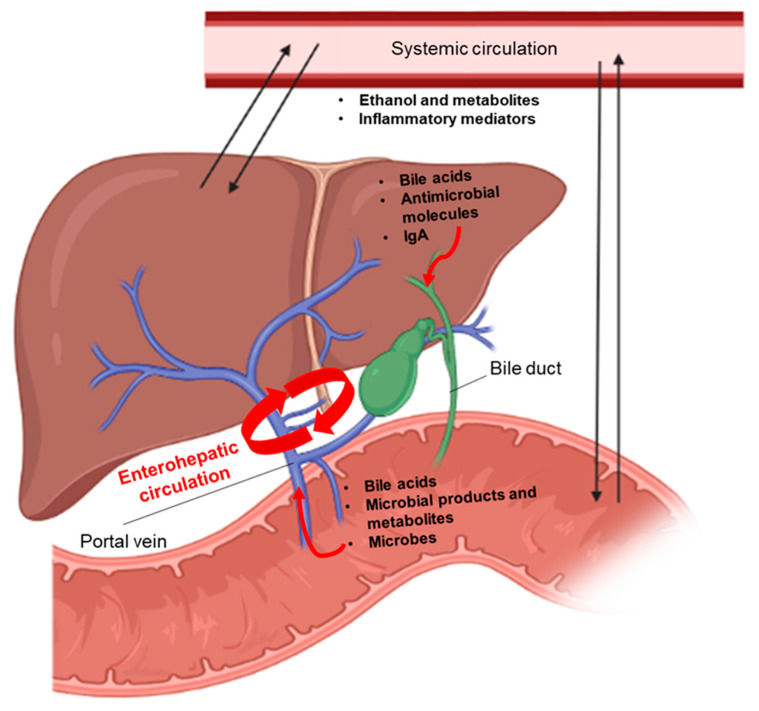Figure 2.
Bidirectional communication between the intestine and the liver. The liver produces primary bile acids, antimicrobial molecules, and IgA that are released in the intestine through the bile duct. In the intestine, these molecules contribute to shape the microbiota. In addition, primary bile acids are converted into secondary bile acids by the gut microbiota. Bile acids, which are reabsorbed in the terminal ileum, microbial products and metabolites, as well as viable microbes are transported to the liver through the portal vein. Once in the liver, they are implicated in triggering immune and inflammatory responses that might lead to liver disease. Moreover, the gut–liver axis is connected via the systemic circulation where ethanol, ethanol-derived metabolites, as well as other inflammatory mediators (cytokines, metabolites, etc.) can reach the two organs, thus influencing their functions. Figures were created with Biorender.com (14 November 2021).

